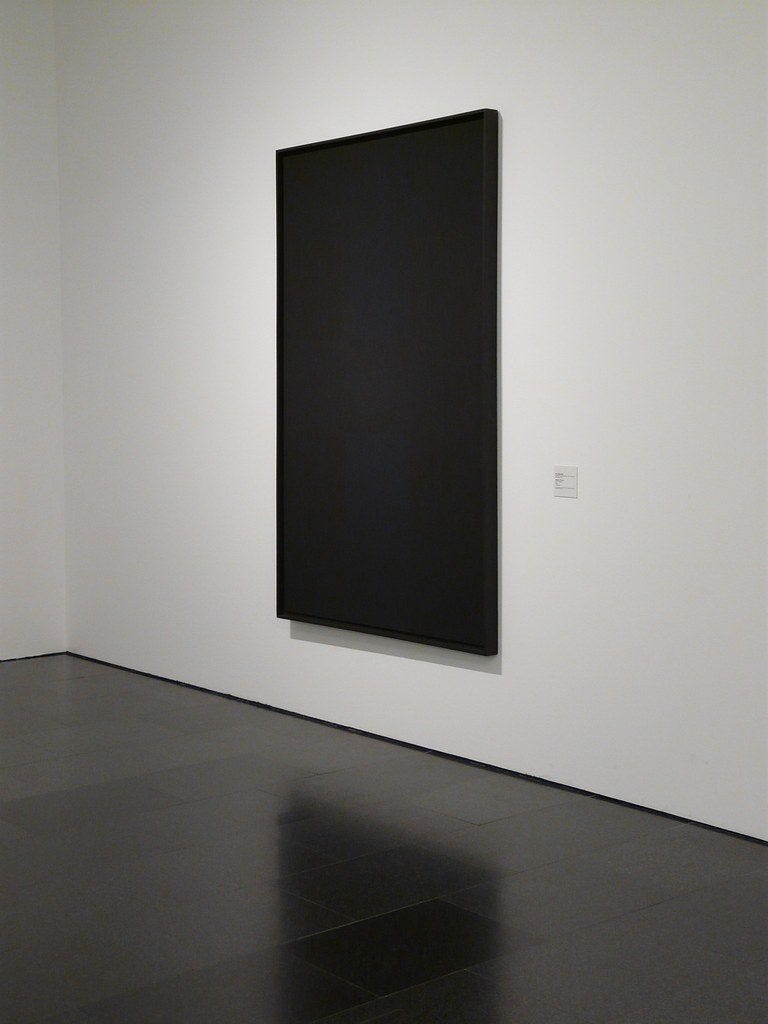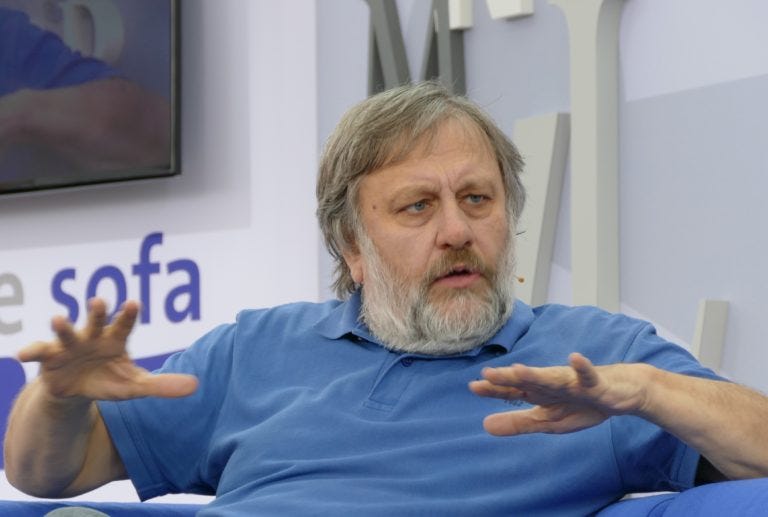In the following essay Asa Boxer explores the relationship between New Atheist thought, Postmodernism and 21st century Social Justice (or bourgeois social justice), all of which share a common metaphysic or all of which agree on the same first principles: namely Mechanical Accidentalism, a fundamentally nihilistic view that conceives of the universe, evolution and consciousness as accidents. Here Boxer draws on ideas from Henri Bergson, William James and Iain McGilchrist (among others) to blast away at the New Atheist notion that present day science has everything figured out. To the contrary, Boxer claims very little is in fact understood and there is still much room for creative vitality.
Cerebramancy
A Cerebramantic Age is upon us, an age characterized by mantic cerebralism—an inconsistent and incoherent mindset that puts so much stock in abstract accounting, that those who consult its ledger-book to decode reality, read all of existence as a series of mechanical assemblies that have sprung up by a series of inevitable accidents. The central doctrine of cerebramancy may thus be called Mechanical Accidentalism. According to this metaphysical model, consciousness is a by-product, or accident—if you like—of these accidents. And since human culture is a product of consciousness, it, along with all its deepest quests, is mere phantasm—a projection of qualities upon an indifferent and otherwise tasteless, odourless, soundless, blind, mute, heartless, senseless and insensible field of particles and interference patterns. Out of this phantasm, human morality emerged, just as mysteriously as consciousness itself. And despite its phantasmagorical origins, despite the accidental pile-up of accidents, ethical behaviour represents human transcendence of accident, a reaction against evolution and the natural world. All that is repugnant in mankind originates in his nature; while all that is best arises from human artifice (though biologically evolved, apparently unnatural or perhaps post-natural), which emancipated us from the struggle for survival, and brought us to a paradise of corporate chains and suburban strip malls where whoever dies with the most toys, wins. This is the only truth, and it is the entire truth. (Never mind that this theory, by its own dictates, finds that it itself is yet another mere fantasy. Notwithstanding! It is supreme among mental aberrations.) Only fools who believe in God think otherwise. All other ideas are silly at best: all of theology, most of philosophy and all metaphysical speculation are unworthy of consideration. This is the New Atheist view.
Cerebramancy is more than just New Atheism, though. Ironically, due to their anti-religious cant, the New Atheists are the proselytizing mystics of a cult that extends well beyond their camp, a movement that has run amok by informing the zealots of Social Justice. While the Brights (as Dan Dennet calls them) are the guardians and promoters of the accidentalist metaphysic, what they are oblivious to is how their accidentalism underpins the Neo-Marxist, Postmodern, Social Constructionist, puritanical fanaticism they revile. In other words, New Atheism, Postmodernism and Social Justice are heads sprung of the same monstrous body—the trifecta of cerebramancy.
WHAT IS POSTMODERNISM?
To answer this question we will focus on some recent art history to foreground those elements that most typify the movement. Although academics in the field (along with practitioners) are liable to dispute that the works pictured below are examples of Postmodern Art narrowly speaking, we are taking a broader cultural view of the subject that includes trends in literature and in the accidentalist intellectual arena. As we see it, Postmodern Art is symptomatic of a culture-wide nihilistic mindset promoting the meaninglessness of subjectivity and entailing the rejection of aesthetic experience.


The essential feature of Postmodern Art and Literature is how it courts academics and shapes itself according to theoretical paradigms. Whereas art ought to take the lead, resist and be served by academic inquiry, such art inverts the relationship, hanging its head and submitting its purposes instead to the trends currently popular amongst cerebramantic academics.



The logic linking New Atheism to Postmodernism and Social Justice is as follows: if the universe is a great accident, and life and consciousness anomalous outcomes, all suffering is a meaningless by-product of nature that we are ethically obligated to obliterate. All adverse experience, all social harms, all conflict, all psychological discomfort, and all dangers (both physical and psychological) must be scrubbed from human existence. Most frightening is that according to accidentalist assumptions, there is nothing to prevent Social Constructionist activism from prescribing a final solution to the ills of peoplekind: that is, a program of medication and brainwashing (or re-education). Once everyone believes the same and the hard edges are rubbed away by meds, the cerebramantic utopia will be at hand.
Considering the human need for an ethical frame, and considering the secular world’s adoption of a spiritually vacant perspective of reality, it is no wonder that a naïve fanatical group of cerebramantics has emerged, one that is just as misguided and troubled as the fanatical religious folk they tend to disparage most. It is the view of this magazine—which is at heart an arts venue, a forum for creative expression—that the cerebramantic social revolution presently tightening its bristling slipknot around us is deadly to the creative spirit. In what follows, I intend to unravel the zombie-eyed view of Mechanical Accidentalism and hand back to you a more uncertain, more flexible, truly vital and truly inspiring alternative—for it is our mission at analogy magazine (formerly The Secular Heretic) to charge art with the task of cultural resurrection and renewal.
What If We're Right?
Perhaps the most useful way to get a handle on this subject, considering the cerebral obsession of our age, is by taking a look at brain science. Iain McGilchrist has done this with tremendous insight in his tour de force book The Master and His Emissary. McGilchrist argues that our culture suffers from left-brain lockdown, a situation in which—borrowing a page from Nietzsche—the emissary (left brain) has grown contemptuous of the master (right brain) and usurped his role. The left brain focuses on grasping and manipulation—the reason the vast majority are right-handed. Consequently the perspective of this hemisphere is utilitarian. It seeks to distinguish objects, identify patterns and render things familiar enough to act upon them (or react to them) automatically. By breaking things down in this manner, it establishes a mechanistic view of the world that relieves us of stress through its high-definition clarity and predictive acumen. Crucially it has command of language. Without the right brain however it does not understand context and therefore cannot process metaphor, humour, mendacity and all manner of subtlety. The left brain is a data processor and therefore atomizes and pixelates the world into mere data points.
Context is the domain of the right brain. It attends to the peripheries, to the unknowns that lurk outside the narrow focal point. Here lies facial recognition, the reading of body language and thus empathy. It perceives the individuality and uniqueness to which the left brain is blind. But because it is not in possession of language, the right brain cannot communicate directly. It needs to recruit the left brain to find expression, hence the left brain’s role as emissary. This is why the left brain finds the right brain dumb, both literally and pejoratively. Without the right brain though the left winds up too immersed among the predetermined objects and predictive circumstances of its worldview to recognize new information. Significantly too it is the right brain that contextualizes the self in the real world. In other words, abandoned to its own lights, the left brain succumbs to an idealized version of things as it has determined them to be, and slips into automatism. Vitality, creativity and imagination belong to the right brain. As a result even cerebramantics who hope to convey something original cannot operate purely with the left brain. What we do find in their behaviour however is a detrimental preference for left-brain function at the expense of right-brain insight.
McGilchrist tells of a typical case in which
A highly intelligent professional. . .was completely unaware of his lack of capacity to do his job after the removal of a tumour in the right prefrontal cortex. When asked to role-play as an occupational health adviser to someone with this problem, he appropriately advised medical retirement, but when asked to apply this insight to his own situation he was completely unable to do so.
from The Master and His Emissary
Remarkable how closely this example of a patient with a defective right brain resembles New Atheist thinkers like Richard Dawkins, who come across as severely impaired where self-awareness is concerned. For instance in The God Delusion Dawkins quite rightly points out that to truly understand a subject, one must give oneself over to it entirely for a period, but he means this only when it comes to others understanding natural selection; when it comes to applying the same standards to his own mind vis a vis the ideas of others, he is incapable of doing the mental work. Here is Dawkins:
It is surprising how necessary such consciousness-raising is, even in the minds of excellent scientists in fields other than biology. Fred Hoyle was a brilliant physicist and cosmologist, but his Boeing 747 misunderstanding, and other mistakes in biology such as his attempt to dismiss the fossil Archaeopteryx as a hoax, suggest that he needed to have his consciousness raised by some good exposure to the world of natural selection. At an intellectual level, I suppose he understood natural selection. But perhaps you need to be steeped in natural selection, immersed in it, swim about in it, before you can truly appreciate its power.
from The God Delusion
Blindly—and quite typically—Dawkins does not accord the same respect for disciplines he deems pseudoscientific or hokum or whatever other terms of derision he feels like throwing at others who don’t think his way. The “power” of natural selection is nothing other than the more general power of analogy. To miss this point is to allow oneself to be misled by the thrill of confirmation that attends metaphor making—something with which poets are all too familiar. Just because a conceit works and provides insight, doesn’t make it the only Truth. This insistence on his own perspective at whatever cost is a sign of left-brain dominance. As McGilchrist points out, “the left hemisphere needs certainty and needs to be right.” What’s more, “Certainty is related to narrowness, as though the more certain we become of something the less we see.” This sort of mental trouble is informed by studies of anosognosia which “reveal a tendency for the left hemisphere to deny discrepancies that do not fit its already generated schema of things” (Master & Emissary). As an example of the arrogant narrowness of Dawkins, let us turn to his The Selfish Gene, where he states as follows:
Is there a meaning to life? What are we for? What is man? After posing the last of these questions, the eminent zoologist G. G. Simpson put it thus: ‘The point I want to make now is that all attempts to answer that question before 1859 are worthless and that we will be better off if we ignore them completely’.
from The Selfish Gene
So much for human culture and civilization itself. We can jettison all philosophy and metaphysics. Dawkins and company have it all figured out. What’s more, with a strange and even puerile fondness for tautology, Dawkins declares, “What I have now done is to define the gene in such a way that I cannot really help being right!” (Selfish Gene). What one cannot help upon reading such absurdities is wonder whether Dawkins perhaps should have read all manner of philosophy and literature predating 1859 and quite a bit thereafter, as it would have stopped him making such an ass of himself. As McGilchrist puts it, “no one way of thinking. . .reveals the true mountain.” Dawkins seems oblivious to what is a pretty obvious observation to any thoughtful person, namely, that “The model we choose to use to understand something determines what we find” (Master & Emissary). Conforming to a mechanistic model, Dawkins determines, among other bizarre conclusions, that human beings are “survival machines” and “robots” (Selfish Gene).

In a recent debate available on YouTube (October 23, 2018) with Bret Weinstein, Dawkins asked, “What if we’re right?” His use of we is not unusual in his rhetorical patterns; it’s not exactly the royal we, but he deploys it often in The Selfish Gene as well. Whether he means the Brights or evolutionary biologists or something else is difficult to tell. Whatever the case, he is speaking of a team or tribe of like-minded folk, cerebramantics all, to be sure. Moreover, this we is not new to the field of evolutionary science; it began with Darwin, who, although a far better writer than Dawkins, introduced some unfortunate flaws into the culture of evolutionary investigation. One of these flaws was the adoption of an us-versus-them position, a Team Darwin versus those with other ideas, namely St George Jackson Mivart who suggested that accidental variation could not account for all of evolution; there had to be some measure of “internal force or tendency” at play (Origin of Species). But an even greater flaw in Darwin’s theory is an all-or-nothing fallacy that seems implicit in all the glib nastiness one gets wind of today toward other ideas that threaten the integrity of the Mechanical Accidentalist narrative.
Speaking specifically of the cuckoo’s instinct to kick its foster siblings out of the nest, for instance, Darwin speculates as follows:
The first step towards the acquisition of the proper instinct might have been more unintentional restlessness on the part of the young bird, when somewhat advanced in age and strength; the habit having been afterwards improved, and transmitted to an earlier age, I can see no more difficulty in this, than in the unhatched eggs of other birds acquiring the instinct to break through their own shells. . .For if each part is liable to individual variations at all ages, and the variations tend to be inherited at a corresponding or earlier age,—propositions which cannot be disputed,—then the instincts and structure of the young could be slowly modified as surely as those of the adult; and both cases must stand or fall together with the whole theory of natural selection. [Emphasis added]
from The Origin of Species
In other words, it cannot be that the cuckoo ever understood what it was doing when it ejected others from the nest. What we’re witnessing is an unconscious and blind reflex that was encouraged by natural selection because it worked. Okay. Intriguing hypothesis. Very possible. But why must the entire validity of natural selection hinge on this premise? Surely even if the cuckoo knew at some level what it was doing, natural selection would still operate, no?
If I may turn this attitude back on the cerebramantics, What if we’re partly right? Because, frankly, that situation is more likely to be the case than our being completely, definitively and exclusively right. History bears out such a perspective, and this too is a proposition which cannot be disputed. As it happens, it is the “right hemisphere [that] makes it possible to hold several ambiguous possibilities in suspension together without premature closure on one outcome” (Master & Emissary). If cerebramantics were more right-brained than left-, perhaps they’d be more right overall.

Destructive Abstractionism
The category of cerebramancy lumps together the New Atheists with the Postmodern, Neo-Marxist Social Justice crowd. So far, I’ve made the case that they share a nihilistic metaphysic one might call Mechanical Accidentalism. Surely that’s where the comparison must end. No two groups could be in greater disagreement over the nature of reality. PoMos are prepared to argue that there is no objective truth and therefore, all truths are subjective and equally valid. Not only is gender socially constructed, but so is sex, even genitalia. Moreover PoMos, via their Neo-Marxist notions, are ready to ascribe all social inequalities to dominance structures that they contend must be overturned to enrich the dispossessed at the expense of the so-called white patriarchy—a notion that incoherently promotes the very hierarchies they claim to oppose, a move that disturbingly evokes memories of atrocities committed throughout the history of Communism wherever it spread. They advocate re-education to correct some aberration called implicit bias—a frighteningly Stalinist method to brainwash Western society and establish authoritarian conformity and uniformity. They even promote racial tension through what they call intersectionality, whereby groups compete in what’s been dubbed an oppression olympics in which the winner, i.e. the most oppressed, is permitted to bully and abuse whoever is designated least oppressed, again perpetuating hierarchy by replacing one with another. None of these things characterize the New Atheists. Granted.
But. . . and indulge me here a moment, New Atheists reject Postmodernism because the tendency of the Postmodern toward abstraction outstrips even the New Atheist. In other words, the differences between the ideas promulgated by these two groups are of degree not of kind. The Postmodern is a fanatically extreme expression of the same abstraction-prone worldview. The result of this extremism is admittedly insane, but it is a grotesque caricature of New Atheism rather than a completely separate phenomenon. True, at least often enough there is empirical evidence underwriting New Atheist doctrines, so they tend to be partly valid. But there’s still a fanatical edge to their close-mindedness. Postmoderns are extremists by comparison, but only due to the hysterical form of their political activism. Postmodern ideas of Social Justice too ultimately stand on solid ground: there is indeed racism, oppression, bullying, domestic abuse, sexism, implicit prejudice and all manner of unfairness and inequality. No one with a heart denies that.
What the PoMos do however is (a) pathologize normative behaviour by deracinating the terms of social trouble from their semantic grounds, splitting the roots and farming their designations into massive crops of abusive subspecies, such that PTSD for instance—a very serious illness—proliferates as trauma more generally (still very serious), then onto ACE (Adverse Childhood Experiences)—which could mean just about anything that upsets a child—and ultimately to so-called micro-aggressions and social harms—which extend to name-calling, aggressive intonation, moodiness and unwanted looks. PoMos then (b) make rules that impugn common human behaviour, enacting a host of oppressive policies and laws, and engaging in childish finger-pointing (a form of bullying)—in short, establishing an aggressive police state that stems from the type of over-codification and statistically driven over-generalization that loses sight of individual and unique persons and circumstances, much the same way New Atheists do.
I’d like to say that New Atheists aren’t forcing their ideas on anyone, that instead they hope to convince with evidence and the power of reason, but this isn’t quite the case. They often resort to name-calling those who reject their authority, and to smearing whatever they deem heretical, going so far as to conduct threatening mailing campaigns to ban books and TED Talks on matters psychic, spiritual and in other ways heretical. They also often lobby to have their views taken up as political policy whilst jealously guarding their massive funding resources. What they are is less shrill than PoMos and thus tend to have more dignity. Both groups subscribe to the same nihilistic vision, and both proselytize with the same underlying metaphysic whereby the world around us is determined to be a social construct—which, let’s face it, it partly is, especially when these folk start meddling. They both tend toward atomization, categorization and over-schematization. And most painful to artists, they both reject beauty (never mind love) as an inherent quality, whether in the world or in art. In short both are marked by the same severe left-brain preference, while going so far as to denigrate right-brain attempts to intrude with alternative views.
Enter analogy magazine
Iain McGilchrist’s perspective is an especially convincing approach in a cerebramantic age. What better way to speak to the left brain than in terms of neuroscience? What’s more is McGilchrist does so with a refreshing tone of humility:
I am not, of course, the first to ask such questions, and they undoubtedly admit of more than one answer, and more than one type of answer. But, while only a fool would claim to have definitive answers, I shall make some suggestions that I hope may encourage others to think differently about ourselves, our history and ultimately our relationship with the world in which we live.
from The Master and His Emissary
It is clear we are dealing with a well-read individual who no doubt is familiar with the history of arrogant claims that turned out to be false. Laughably for instance Lucretius the Roman atomist and author of On the Nature of Things—who much like the New Atheists, wove into his work pre-emptive insults against detractors—was certain the Earth was flat and whoever thought otherwise was an idiot.
While the notion of using the brain and neuroscience as a source of hermeneutical analysis is highly effective, it is the nature of analogy magazine to keep an open mind and entertain all manner of surprising ideas, especially when there is some convincing evidence at hand. With William James, we are happy to be counted among the radical empiricists.
As it happens, there is evidence to suggest the brain is not all we make it out to be. Despite all the scanning, mapping, poking around with electrodes and severing left from right, there have been observations of hydrocephalic persons with no brains of any account operating with high functionality. Gary Lachman, in his A Secret History of Consciousness, relays David Darling’s reports on these cases in his After Life: In Search of Cosmic Consciousness. I might as well quote Lachman in full on this:
Darling speaks of two children born in the 1960s who “had fluid where their cerebrums should have been. . . . Although neither child showed any evidence of having a cerebral cortex, the mental development of each appeared perfectly normal.” In another case, a man with an IQ of 126, a graduate of the University of Sheffield with a first-class honors degree in mathematics, and by all accounts bright and perfectly ordinary, had no detectable brain. Identical twin girls with advanced hydrocephalus enjoyed above average IQs. In one case, an autopsy performed on a young man who had died suddenly revealed “only the most paltry rind of brain tissue.” When the coroner expressed sympathy for the parents’ loss, but offered that at least now their severely retarded son had found peace, the parents were dumbfounded, informing him that their bright son had been at his job only days before. Although the paper reporting these cases received some attention at the time, it was subsequently forgotten, its findings just too contrary to the reigning scientific orthodoxy.
from A Secret History of Consciousness
Well before these particular studies emerged, the evidence was already highly suggestive on this question concerning the brain's connection to consciousness—enough for Henri Bergson to explain as follows:
The lower we descend in the animal series, the more the nervous centres are simplified, and the more, too, they separate from each other, till finally the nervous elements disappear, merged in the mass of a less differentiated organism. But it is the same with all the other apparatus, with all the other anatomical elements; and it would be as absurd to refuse consciousness to an animal because it has no brain as to declare it incapable of nourishing itself because it has no stomach.
from Creative Evolution
What is the truth? Analogy magazine does not presume to answer this question any more than it presumes to answer the meaning of life, the universe and everything. We are with Douglas Adams who ridiculed mechanistic science in his Hitchhiker’s Guide to the Galaxy when he had the greatest supercomputer ever built spit out “42” as the answer to the latter question. Analogy magazine is of the mind that despite our flashy technology and the intricacies of our data, we in fact know very little. Surely the idea that there is still a great deal to discover is a more inspiring position for artists, philosophers and scientists alike. William James shone his lantern upon this point in his 1895 address to the Harvard Young Men’s Christian Association entitled “Is Life Worth Living?”:
I have heard more than one teacher say that all the fundamental conceptions of truth have been found by science, and that the future has only the details of the picture to fill in. But the slightest reflection on the real conditions will suffice to show how barbaric such notions are. They show such a lack of scientific imagination, that it is hard to see how one who is actively advancing any part of science can make a mistake so crude.
from The Will to Believe
We are consequently more sceptical than Skeptic magazine, which reserves its scepticism for whatever is not institutionally sanctioned science. What is the value of partisan scepticism, one wonders? We are also not gullibly open-minded. This is not to suggest that we walk a middle road. We aim to be audacious; that is, we admire true riskiness, for it is our goal to inspire our readers.
Yet we respect science qua science. It is institutionalized Science or scientism at which we raise an eyebrow. In short we appreciate both the power of the scientific perspective and the limitations of scientific investigation. Here is Bergson’s take on the matter:
Now I recognize that positive science can and should proceed as if organization was like making a machine. Only so will it have any hold on organized bodies. For its object is not to show us the essence of things, but to furnish us with the best means of acting on them. . . .Organization can therefore only be studied scientifically if the organized body has first been likened to a machine. . . .That is the standpoint of science. Quite different, in our opinion, is that of philosophy.
from Creative Evolution
Hence our goal is to play the role of loyal emissary to the vital force that abides within us and to sanction creative thought by daring to question the unquestionable. Clearly William James was already dealing with problems similar to those facing us presently when he wrote the following in his “The Sentiment of Rationality” (1879-1880):
…thousands of innocent magazine readers lie paralyzed and terrified in the network of shallow negations which the leaders of opinion have thrown over their souls. All they need to be free and hearty again in the exercise of their birthright is that these fastidious vetoes should be swept away. All that the human heart wants is its chance. It will willingly forego certainty in universal matters if only it can be allowed to feel that in them it has that same inalienable right to run risks, which no one dreams of refusing to it in the pettiest practical affairs.
from The Will to Believe
The essays, articles, memoirs, fiction and poetry and artworks that appear in this magazine are all meant in this spirit—to liberate the heart from the constraints of cerebramancy. We hope to be a voice that whispers in your ear to buck the roughrider who would break you; to kick against the pricks that seek to subdue your spontaneity. Cerebramantics everywhere are working to corral our minds and hearts, to put an end to love, to humour, to sexuality, to belief. In response we offer an inspiring haven in that wasteland, where philosophy and art can come together to reinvigorate your imagination by shaking up the mental kaleidoscope, revealing ever-new constellations.
Asa Boxer’s poetry has garnered several prizes and is included in various anthologies around the world. His books are The Mechanical Bird (Signal, 2007), Skullduggery (Signal, 2011), Friar Biard’s Primer to the New World (Frog Hollow Press, 2013), Etymologies (Anstruther Press, 2016), Field Notes from the Undead (Interludes Press, 2018) and The Narrow Cabinet: A Zombie Chronicle (Guernica, 2022). Boxer is also a founder of and editor at analogy magazine.





